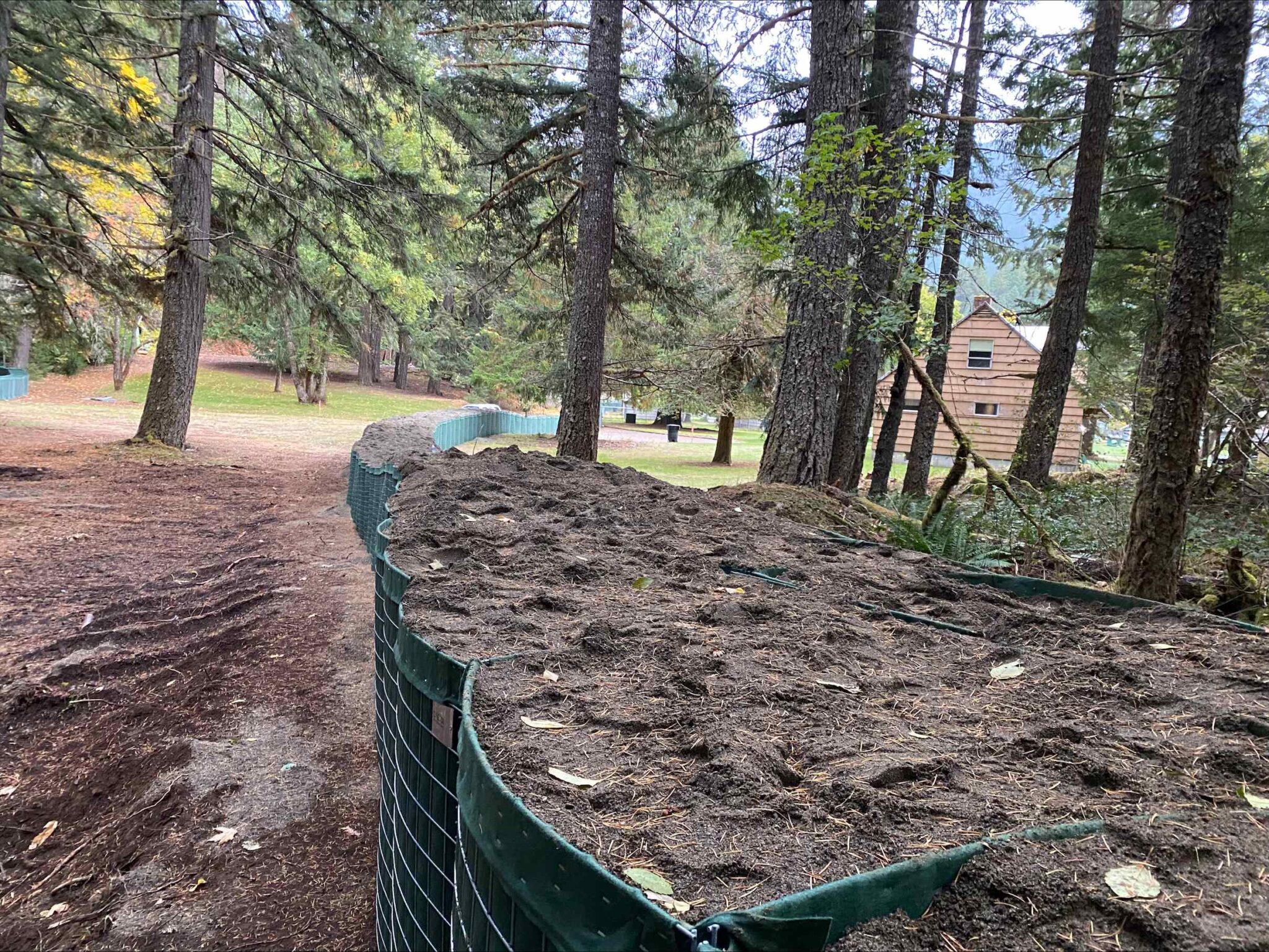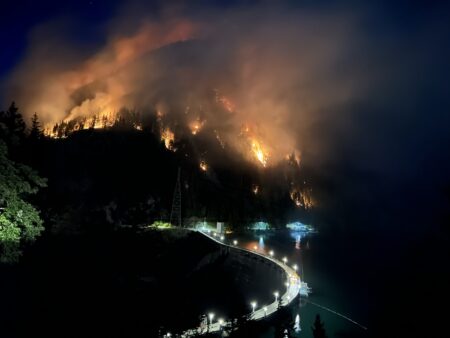Fall is quickly passing by, and winter is nearly upon us. In the North Cascades where the Skagit Hydroelectric project sits, snow has already fallen and with it comes enough precipitation to extinguish the remnants of the Sourdough fire.
Sourdough fire recap
The wildfire first began on July 29, 2023, with a lightning strike on the slope high above Diablo Lake on Sourdough Mountain. It quickly spread down toward Diablo dam, the town of Diablo, and the North Cascades Institute’s Environmental Learning Center. By August 3, the fire had grown exponentially, and learning center staff and Diablo town residents were evacuated for their safety.
Over the next months, hundreds of fire crew, operations personnel, and City Light staff from Boundary, Newhalem and Seattle, worked in tandem with many regional and federal agencies to contain and limit the damage to infrastructure from the Sourdough fire. At its peak, the fire was more than 7,000 acres, and State Route 20 was forced to close several times as the fire threatened the area.
Out of an abundance of caution to provide safe access to fire crews, our staff, and to safeguard infrastructure, we twice took two of the three dams in our Skagit Hydroelectric Project offline for several days. Over the course of the fire, Seattle invested $2.6 million dollars in purchasing power from the energy marketplace to make up the difference in demand.
Luckily, fire activity turned away from public areas and critical infrastructure in September. The multiagency fire group was able to step down and hand over operations to the National Parks Service.
Planning for the months ahead
City Light has actively managed wildfire risk for years. Earlier this year, we unveiled our Wildfire Risk Reduction Strategy, which prioritizes minimizing potential wildfire damage through risk reduction plans. It also ensures that we are prepared to respond effectively and recover quickly. We utilized the strategy in real-time during the Sourdough fire, and it continues to serve us through the recovery period. This is just a piece of the overall work and ongoing preparations as we address how the Sourdough fire has impacted the region’s land, vegetation, and wildlife.
Assessing roadway conditions, infrastructure, and surrounding land began during the peak of the fire’s activity and has continued. Given the large burn scar that was left in the fire’s wake after it turned away from Diablo and Ross lakes, we began working with the Washington Department of Natural Resources to complete a geological survey of the area. The study’s findings indicated that some areas above Stetattle Creek have a 60-100% likelihood of sliding, endangering infrastructure and roadways below.
Recovery in action
Given the precarious nature of the surrounding land and the continuing threat of falling rock, City Light staff jumped into action by installing and constructing a wide variety of protective barriers to help keep our employees and operations protected. Signs and gates along with other security measures have been installed to keep the public away from areas that are in serious danger.




HESCO barriers were constructed and strategically installed along areas vulnerable to land slides


Eco-blocks were placed singularly and in stacks to provide barriers from falling rocks and sliding slopes
Proactively, we have cut trails and strategically placed necessary equipment to address any slide activity, should it occur. This will help ensure minimal disruptions in operations and allow our staff to get in to begin any needed repair work as soon as possible. While PNW winter weather remains unpredictable, we hope to be able to report in the spring on the success of these measures and the return of recreation to the area.


